 |
That was all we brought back from a Farm
in Austria in 2004.
The owner told us that he has two Crafts in parts and that we can
pick them up for small money.
The carfts had been siting behind a barn for some years and the
lower section of the hull has roted away.
So we got one for a 1400 km tour but did not pay a cent.
|
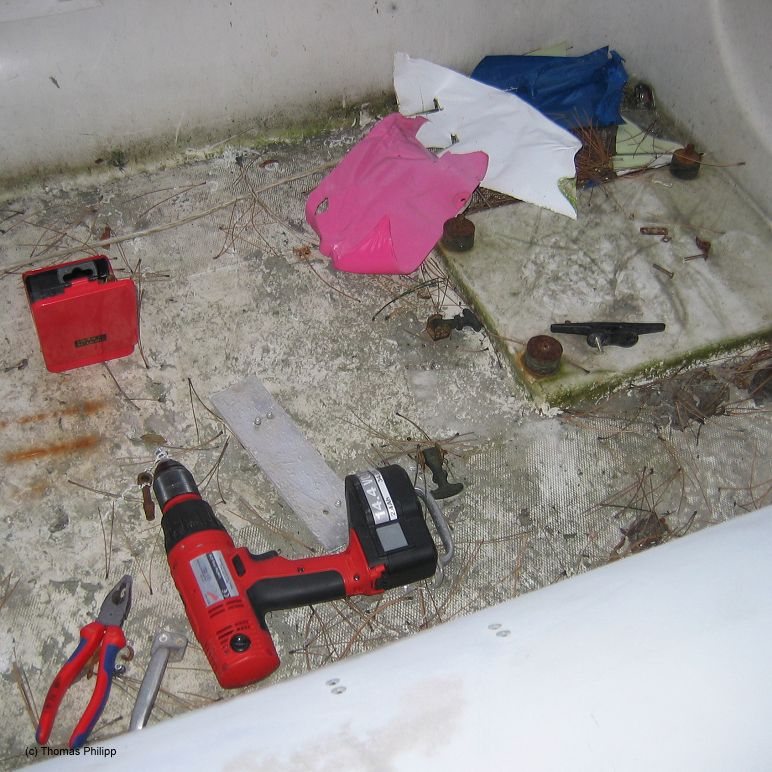 |
Even the upper hull was not in a good shape.
|

|
Some parts had been badly damaged due to an impact.
|
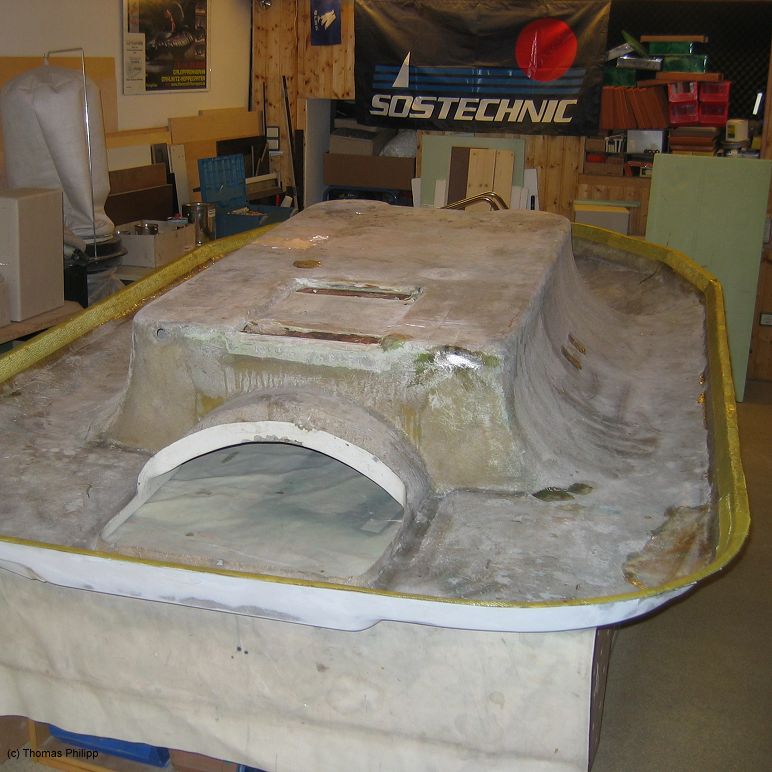 |
After days if grinding and with some reinforecement the upper part was finaly stableliced.
|

|
With the original 75 cm Duct missing, we had to work out how to fix the new 80 cm Duct we had build.
Luckily the Hovercraft Club Baden had a mold for a 80 cm duct on hand we could borrow.
|

|
The new duct support was mad up with some glass and carbon fabrics.
|
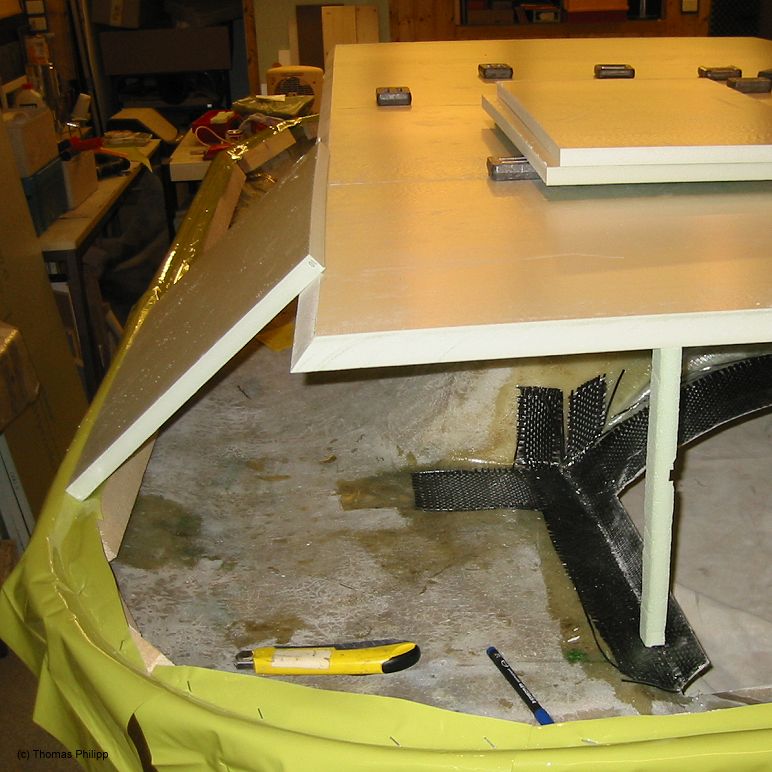
|
The lower hull is made out of Styrodur.
|

|
To strengthen the edge a layer of Kevlar was used.
|
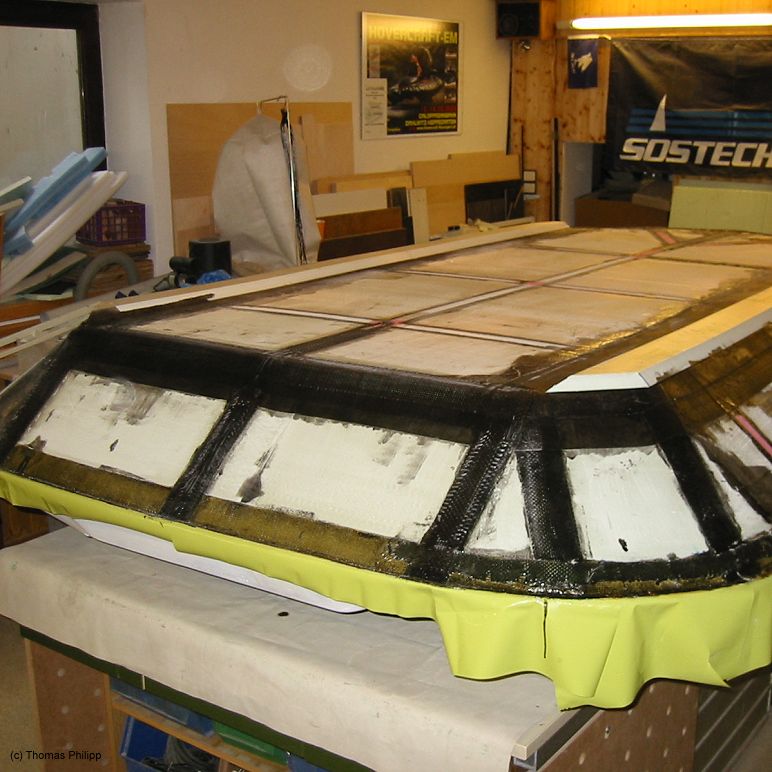
|
The groove in the foam got filled with glas and carbon for additional stability.
|

|
Finaly it got a layer of fiberglass fabric and a reinforcement with Kevlar.
|

|
Next the installation of a brand new Rotax 503 engine.
|
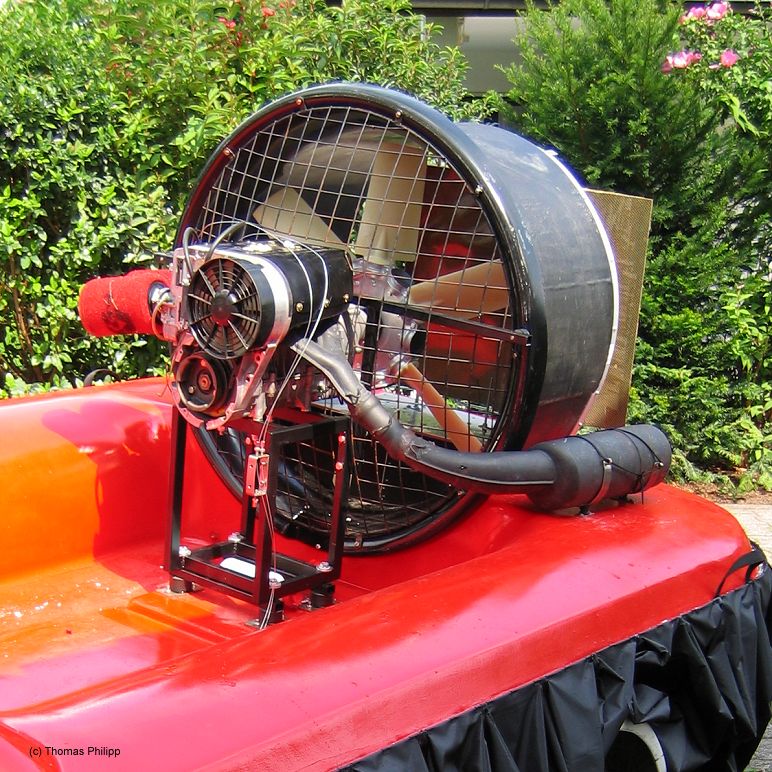
|
Assembling the craft took some time as a lot of small parts had to be build from scratch.
|

|
Some red paint made the old hull look like new.
|

|
The first test, with the later call MK I setup, took place at the local airport.
|
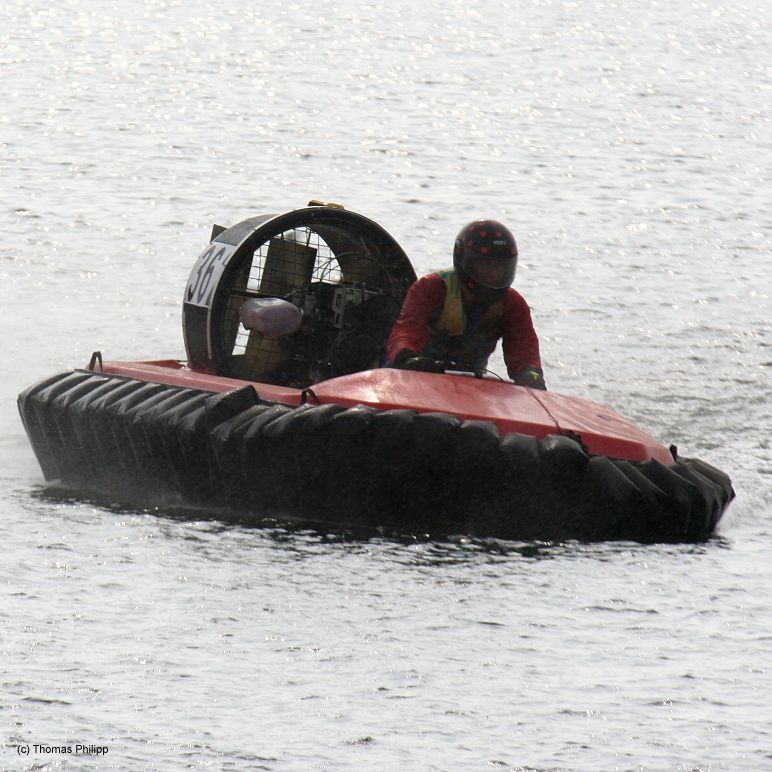
|
It first saw action during the European Hovercraft Championships in June 2006.
The skirt caused problems, being not stiff enough and had to be adjusted.
|

|
The modified skirt design, first used during the Hovercraft Worls Championships 2006 in France, proofed to be more stable.
|
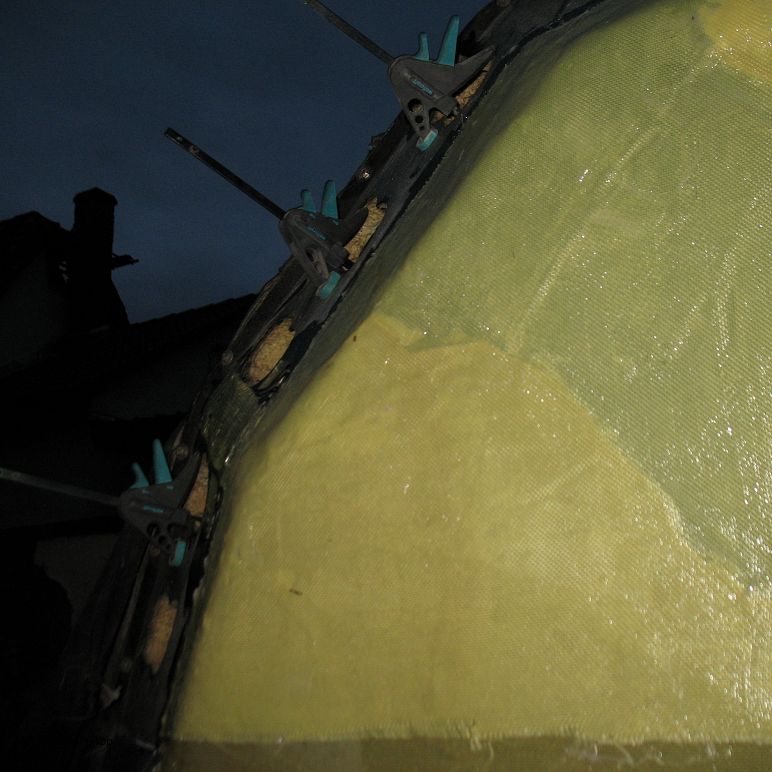
|
A race accident has lead to some major repairs ahead of the Hovercarft Worls Championships 2008 in Sweden.
|
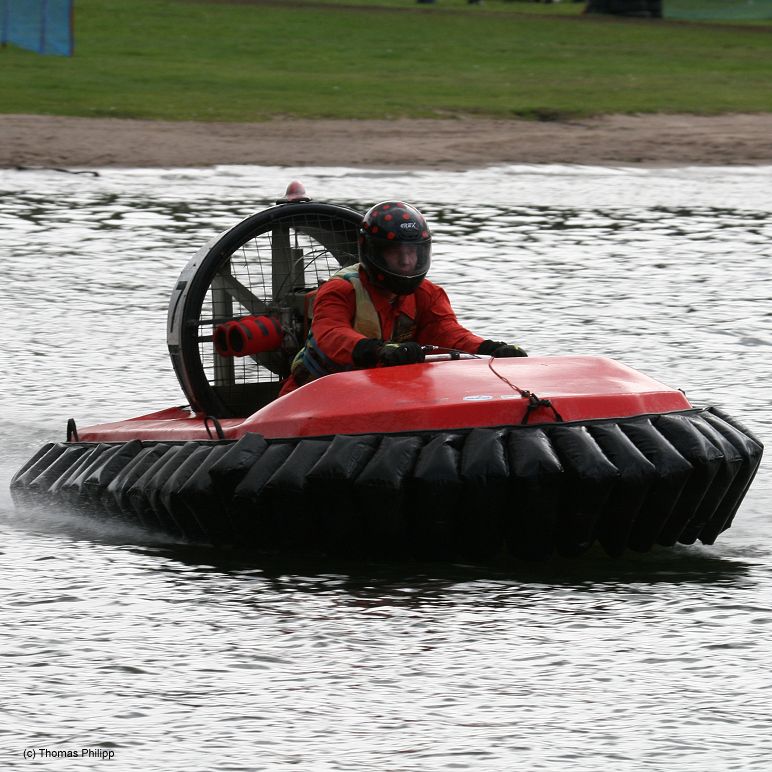
|
The Hovercarft Worls Championships 2008 in Sweden exposed a significant problem.
The design of the upper hull caused a downforce on the long and fast water sections in Sweden.
I therefore had to slow down to avoid a blow in, which would send me into the cold water.
|
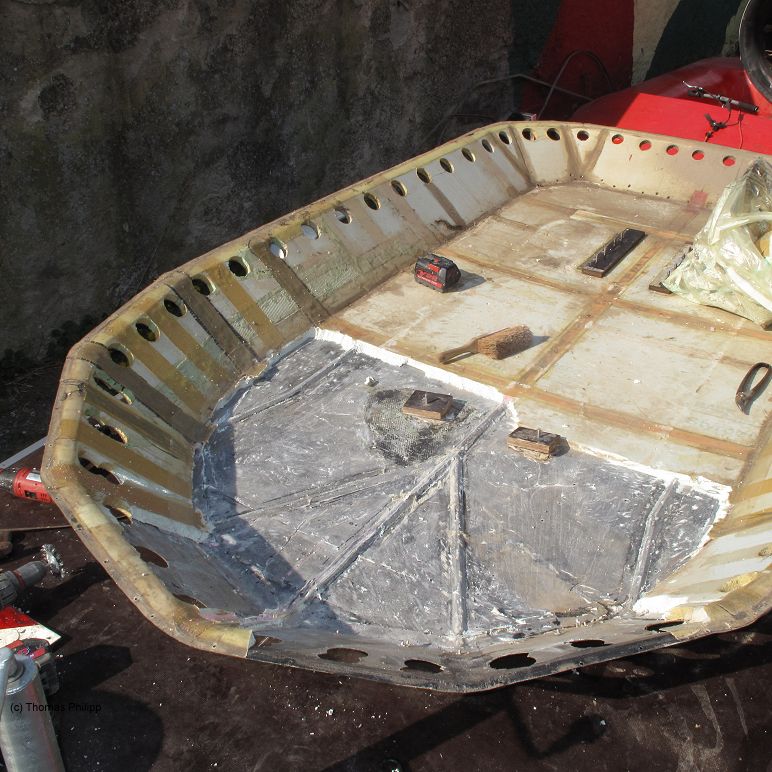
|
One of those blow ins did not send me into the lake, but it caused structural damages in the front.
|
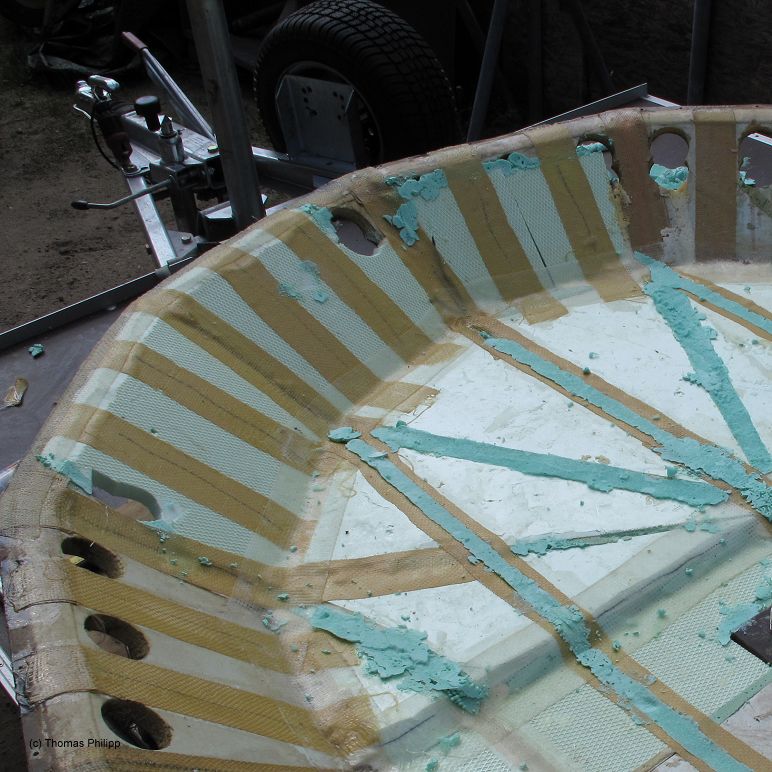
|
A new and reinforecd front section had to be build.
|

|
Together with a once again improved skirt design the modified craft first saw action during the European Hovercraft Championships in Freiburg in 2009.
|

|
Spring 2010 brought a new slitter design to reduce vibrations and a stator to act as a flow straightener, together with the improvements from 2009 the Craft became the MK II Version.
|

|
With the new splitter and the flow straightener, the craft became even faster and I cound not longer ignor the problem with the
downforce. So I decide to take of a part of the front section in the middle of the 2010 season.
|
 |
Some days later the new front got its paint an looked as good as new.
|
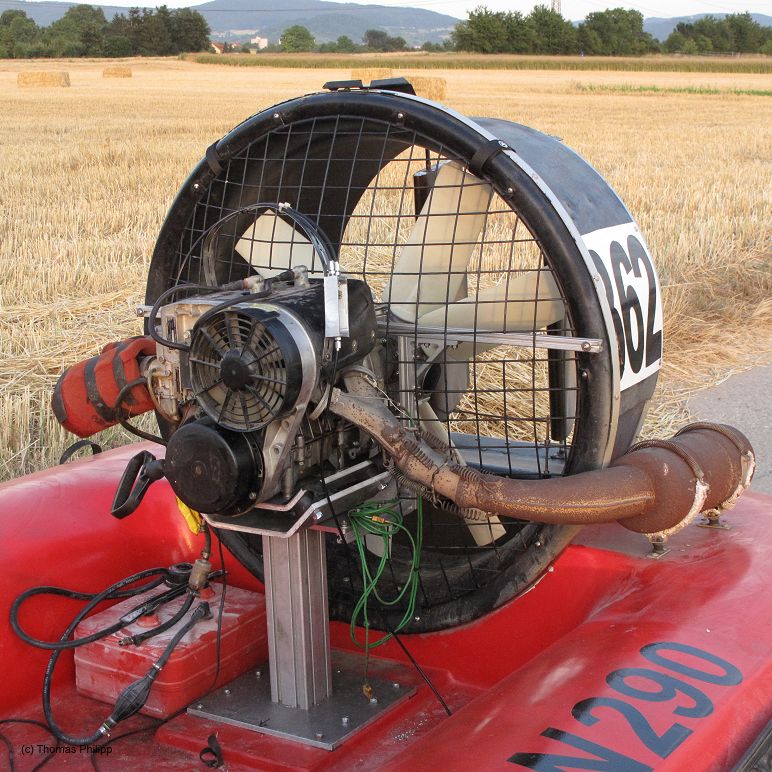
|
As the engine mount has had problem caused by the vibration I
redesigned the mount replacing the welded steal version with an
aluminium one.
With a new front and a new engine mount, the fan hub changed from a
12 to to a smaler 9 this stage got called MK III.
|
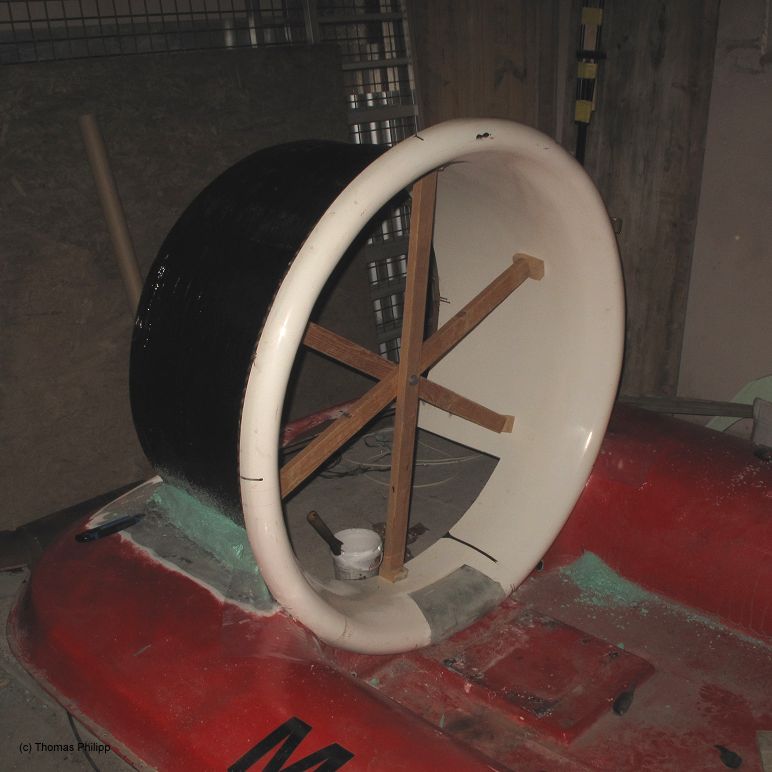
|
Right before teh Hovercraft World Championships in 2010 I decide to
go one step further and replace the 80cm duct with a 95 cm duct.
To avoid a reconstruction of the engine mount I decided to cut out
parts of the upper hull to fit the new duct.
|
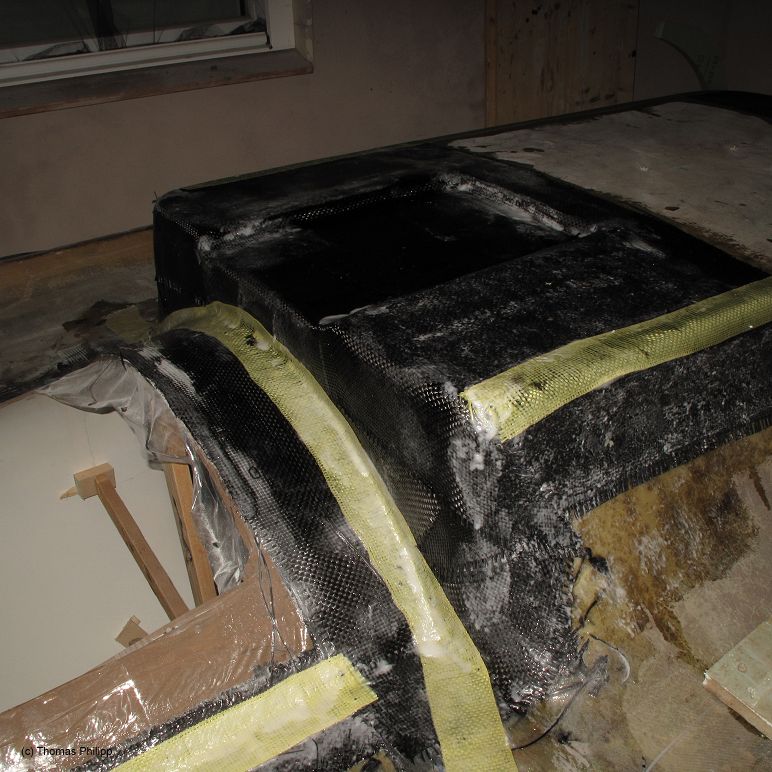
|
As the duct needed to sit 7,5 cm lower in the hull the old support
had to be replaced.
This time the rear section was reincorced with carbon fabric to
provide more stiffnes.
|

|
To ensure the duct can withstand the force a "Python" called ring
was instaled.
|
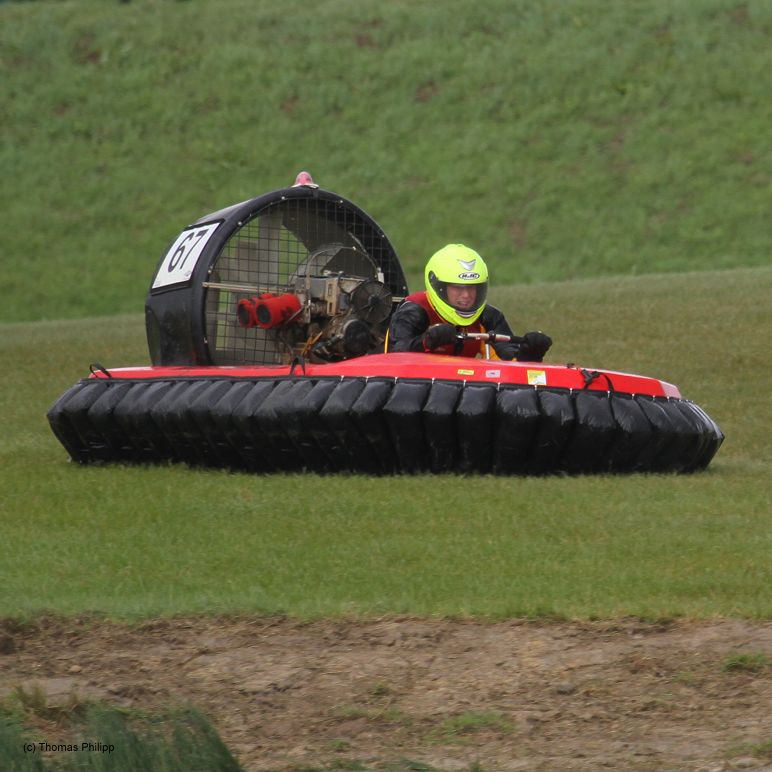
|
With a duct cove in place the now called MK IV version first saw
action during the Hovercraft World Championships in UK in 2010.
|

|
The season 2011 show some waknesses in my splitter design which
bended to much and I had to replace the splitter plate with a
stronger one.
|
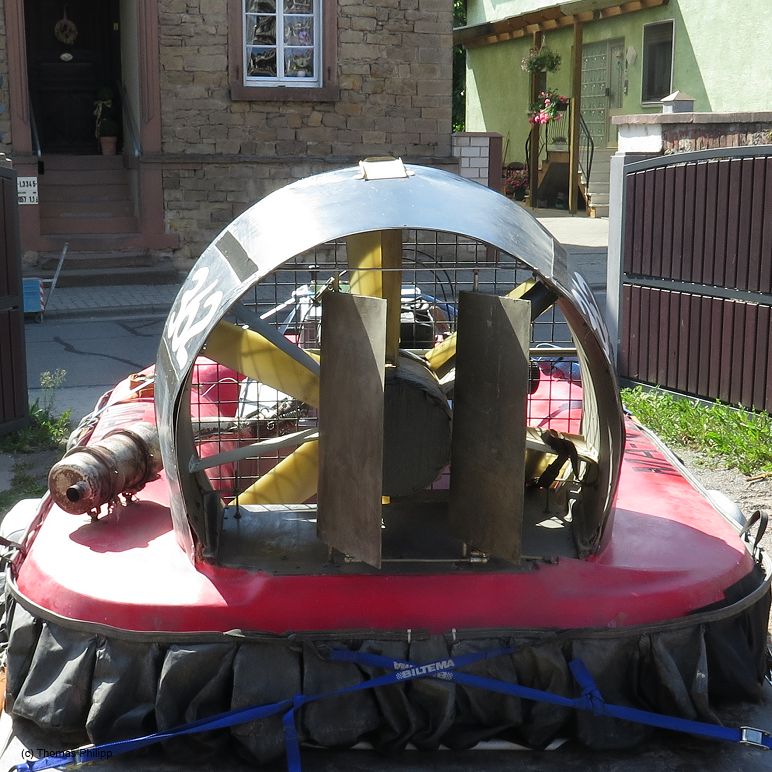
|
To fit in the new splitter plate I had to change the stator position
which caused problems with the ruders.
|

|
In 2016 I finaly redesigned the stator and re-positioned the ruders,
which are still the same as in 2005.
This ultra thin carbon-kevlar ruders had been made to last one
season.
|
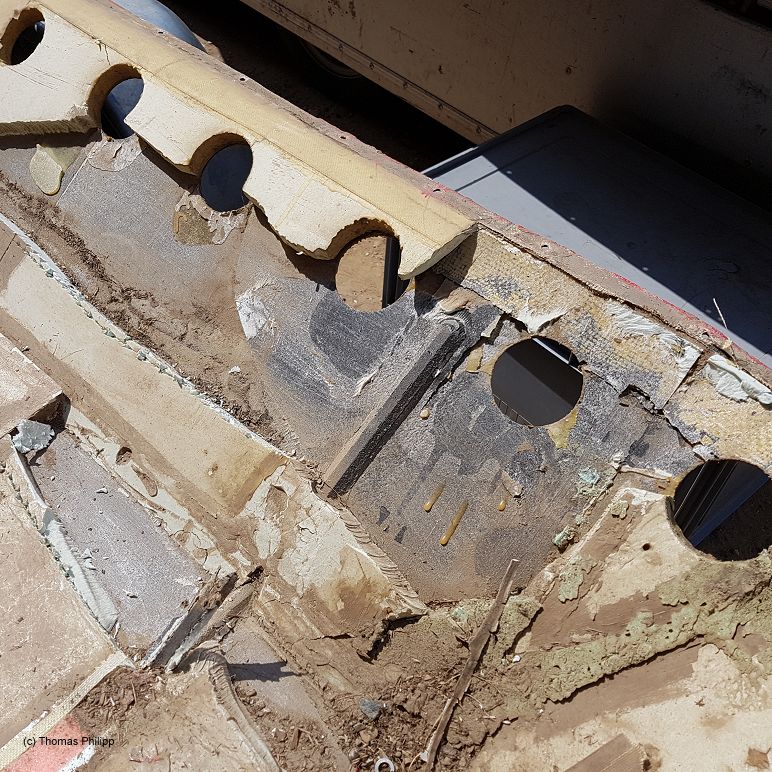
|
Some bumps during tests and a race accident had caused some significant damages in 2018.
|
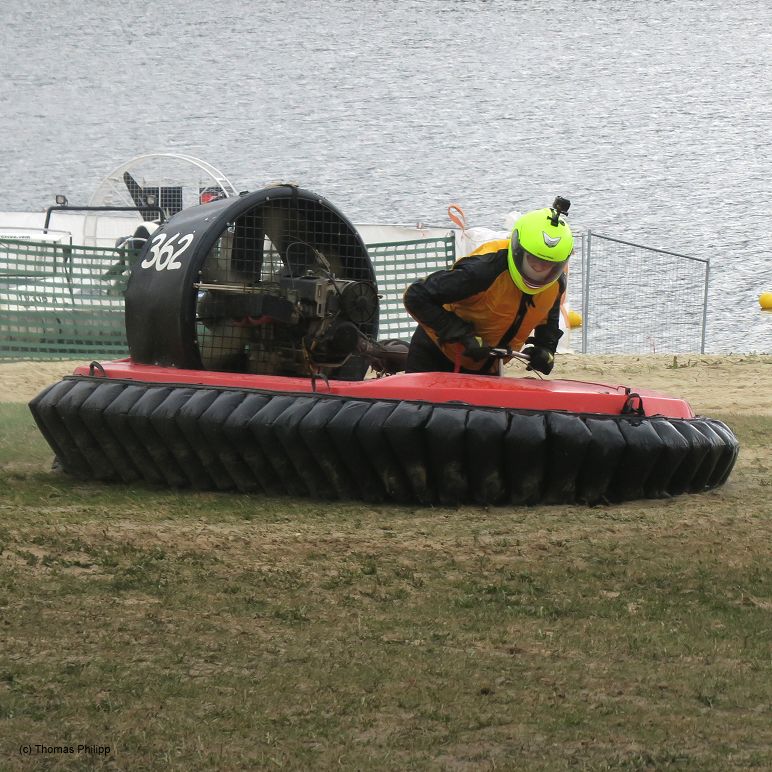
|
Rebuild, the crafts was as good as before in the season 2019.
|

|
| With the Covid-19 crises the craft saw action again during the Hovercraft World Championships 2022 in Sweden. |
